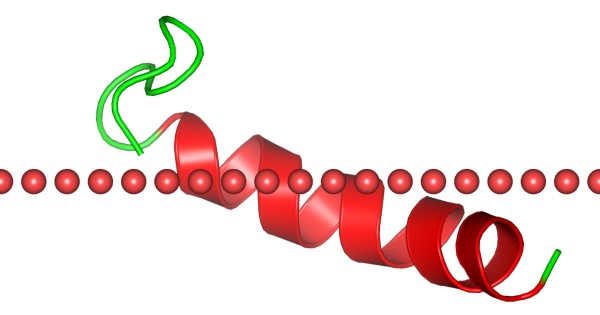Mempro™ Peptide Fragments of Water-soluble Proteins Production Using Virus-like Particles
Creative Biostructure has built up the unparalleled membrane protein production platform through years of experience, provide unmatched custom Mempro™ Peptide fragments of water-soluble proteins production services using virus-like particles (VLPs) platform.
Virus-like particles (VLPs) are actually self-assembled multi-protein structures, which can simulate the native virus. Most notably, VLPs are non-infectious due to lack of any viral genetic information. It is well known that VLPs can be obtained from the Hepatitis B virus and are composed of the small HBV derived surface antigen (HBsAg). Moreover, VLPs carrying conformationally-complex membrane proteins (termed lipoparticles) have been applied for transmembrane protein production. Lipoparticles can incorporate a wide range of structurally intact membrane proteins, including G protein-coupled receptors (GPCRs), ion channels.
Peptide fragments of water-soluble proteins are a large group of peptides, which consist of ten families, including peptides of STE5 protein, prion protein peptides, peptides of viral protein R, peptides of huntingtin, peptides of lactotransferrin, amyloidogenic peptide of phosphatase, peptides of antifreeze protein, peptides of superoxide dismutase, hemocyanin-derived peptides and peptides of DNA-binding proteins. Viral protein R (Vpr) is human immunodeficiency virus type 1, which is a 14-kDa protein with 96 amino acid residues and is very crucial in the regulation of nuclear import of the HIV-1 pre-integration complex.

Figure 1. The structural model of viral protein R, peptide 59-86. (OPM Database)
Creative Biostructure has rich experienced in providing high-quality peptide fragments of water-soluble proteins in the highly purified and native-conformation state. Lipoparticles can be produced from bacterial cells, yeast cells, insect cells, plant cells and mammalian cells for peptide fragments of water-soluble proteins production. Escherichia coli (E. coli) strains and insect cells are the most widely used systems for VLPs production. Mammalian cells are also used for VLPs production with the target to construct vaccine candidates. For instance, we can obtain lipoparticles from mammalian cells by co-expressing the retroviral structural core polyprotein, Gag, along with the desired transmembrane protein. Gag core proteins self-assemble at the plasma membrane, where they bud off and capture target membrane proteins. Since the peptide fragments of water-soluble proteins within lipoparticles are derived directly from the cell surface without mechanical disruption or detergents, the native structure and orientation of transmembrane proteins are retained.
Creative Biostructure also provides other various Mempro™ membrane protein production services. Please feel free to contact us for a detailed quote.
References:
A. Roldão, et al. (2010). Virus-like particles in vaccine development. Expert Rev. Vaccines, 9(10): 1149-1176.
S. P. Braithwaite, et al. (2012). Protein phosphatases and Alzheimer's disease. Prog. Mol. Biol. Transl. Sci., 106: 343-379.
S. Willis, et al. (2008). Virus-like particles as quantitative probes of membrane protein interactions. Biochemistry, 47(27): 6988-6890.